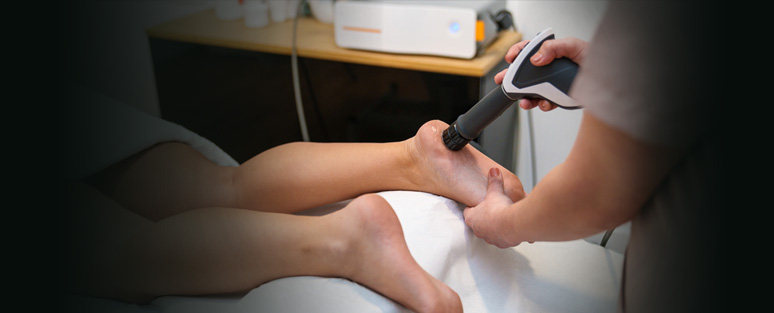As an orthopedic surgeon, I want to help you understand inflammation, why it matters, and how we can work together to manage it before it leads to long-term issues.
What is Inflammation?
Inflammation is your body’s natural way of responding to something that isn’t right, like an injury, infection, or overuse. It’s part of the healing process. The area may feel warm, swollen, red, or painful. This is called acute inflammation, and it usually lasts a few days to a few weeks while your body repairs the damage. However, chronic inflammation is different. It can last for months or longer and may not go away on its own. It may not even start with a clear injury. Chronic inflammation can begin to damage healthy tissue over time, including joints, tendons, and nerves.
Why the Foot and Ankle?
The foot and ankle are complex, weight-bearing structures made up of more than 30 joints and 100 muscles, tendons, and ligaments. They work hard every day to keep you mobile. That means they are very vulnerable to inflammation, especially from repetitive stress, poor mechanics, or underlying medical conditions.
Common Conditions Related to Inflammation
You may have heard of some of these conditions. They all involve inflammation and are commonly seen in the foot and ankle:
- Plantar Fasciitis – Inflammation of the thick band of tissue under the foot, often causing heel pain
- Achilles Tendinitis – Inflammation of the tendon at the back of the ankle
- Posterior Tibial Tendon Dysfunction (PTTD) – Inflammation in the tendon that supports your arch
- Bursitis – Inflammation of fluid-filled sacs that cushion the joints
- Arthritis – Inflammation inside the joints (including rheumatoid arthritis, osteoarthritis, or gout)
- Nerve Entrapment – Inflammation that irritates or compresses a nerve, such as tarsal tunnel syndrome
Signs You Might Be Dealing with Inflammation
If you're not sure whether your pain is from inflammation, here are some common signs:
- Swelling in your foot or ankle that doesn’t go away
- Pain with walking, standing, or activity
- Stiffness, especially in the morning or after rest
- Warmth, redness, or tenderness in the area
- Limited movement or difficulty bearing weight
What Causes Inflammation in the Foot and Ankle?
Inflammation can come from a variety of sources:
- Overuse – repetitive movements or standing for long periods
- Injury – sprains, fractures, or tendon tears
- Biomechanical issues – flat feet, high arches, or abnormal gait
- Poor footwear – lack of support or improper fit
- Medical conditions – autoimmune diseases like rheumatoid arthritis or systemic inflammation from gout or diabetes
If left untreated, chronic inflammation can cause long-term damage like joint degeneration, tendon rupture, or nerve damage.
How to Treat It
Here's how we usually approach it:
Step 1: Reduce Inflammation
- Rest – giving your foot or ankle a break
- Ice – to reduce swelling and ease discomfort
- Supportive shoes or braces – to protect the area
- Anti-inflammatory medications (NSAIDs) – like ibuprofen, under supervision
- Stretching and physical therapy – to restore movement and strength
Step 2: Target the Underlying Cause
- Custom orthotics to improve alignment and offload pressure
- Imaging, such as X-rays or MRI, to check for deeper issues
- Medical workup for autoimmune conditions or metabolic concerns like gout
Step 3: Advanced In-Office Treatments
If symptoms persist despite conservative care:
- Shockwave Therapy – a noninvasive treatment to help stimulate healing of chronic tendon and ligament injuries
- MLS Laser Therapy – an FDA cleared, non-invasive treatment of chronic pain and inflammation that can also improve blood flow and healing of chronic pain due to joint, ligament, tendon and muscle inflammation and degeneration
- Platelet Rich Plasma (PRP) injections – using your body’s healing cells to reduce inflammation
- Stem-Cell and Nanofat injections – using your body’s powerhouse for maximum healing potential
- Steroid injections – targeted relief, when appropriate
Step 4: Surgical Options
Surgery is rarely needed for inflammation alone, but may be considered if:
- There’s structural damage (like a torn tendon or advanced arthritis)
- Nonsurgical treatments have not worked
- Nerves are being compressed and causing lasting pain or dysfunction
Procedures may include tendon repair, joint fusion, arthroscopic debridement, or realignment surgery, depending on the source and severity of inflammation.
What You Can Do
- Don’t ignore the signs. If you’ve had pain, swelling, or stiffness for more than a few weeks, it’s time to get checked out.
- Support your feet. Wear shoes with arch support and cushioning.
- Stretch and move wisely. Gentle stretching and strengthening can help reduce stiffness and prevent injury.
- Follow a plan. Inflammation is manageable, but only if we address it early and consistently.
In Conclusion
Inflammation is part of how your body heals, but when it lingers too long or starts affecting healthy tissue, it’s time to act. Foot and ankle inflammation can impact your movement, your comfort, and your quality of life. The good news? With a proper diagnosis and a personalized treatment plan, I can help you get back to doing what you love, without pain.
Click Here to schedule a consultation with Dr. Natalie Mesnier at Multnomah Orthopedic Clinic. Your orthopedic health is her priority.














